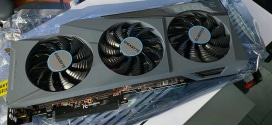Overclocking
Overclocking the 9900K is very similar to any other Coffee Lake CPU although depending on boards you use the options can vary wildly. One thing to note is that much like the 8086K which was really kind of pushed to its limit there’s not alto of headroom left on these chips. Add to that even though the solder TIM or STIM as Intel has labeled it, the chips still run quite hot when pushing them. Its simple physics, they stuffed two more cores into this small package so its 25% more chip to cool vs an 8700K and yes the TDP is 95W but that’s at the base clock. When we watched turbo take effect we saw power draw for the CPU swing up to the 160W range which as I’m sure you can imagine generates some serious heat.
We were able to get a fully stable 5.1GHz clock at 1.365VCore, however, the benefits were marginal at best as enabling MCE or Multi-Core enhancement or Enhanced Turbo or however it may be referenced depending on your board will run up to 5GHz on all cores anyways or close to it.
I am hoping future BIOS revisions and microcode updates can ease things up a bit and optimize capabilities as even with my 360mm AIO while it was not throttling it was taking north of 1.4V to get stable at 5.2GHz and while it may be in the ballpark of what’s considered reasonable I just don’t feel I would want to pump that much voltage all the time for a meager 100MHz gain.
Here you can see that with the overshoot by LVL 5 LLC I was playing a bit with voltage and offsets and was fully stable at 1.365-1.38VCore for all core 5.1GHz.
ASUS does have a new AI Overclocking utility within the BIOS that uses learning based on stress testing and quick adjustments based on presets from what the ASUS engineering team has learned form binning multiple chips which can reach really close to your overclock you may spend a significant amount of time setting up yourself. I did test it and it got to the same overclock I did albeit it padded the voltage a bit more than I needed at .015V over what I actually needed for full stability. This is likely due to the fact that they have to account for worst case silicon quality as well which means you always get a small overshoot depending on your chip quality.
Temperatures
For Thermals the 9900K is an interesting animal as it can get really hot really fast. then again we are packing more cores onto the already toasty 8700k in essence right?
Our thermal results when testing with MCE “AUTO” was well manageable,
We test with a real-world load by running large video encodes in succession to fully burn in the CPU. We do not use artificial stress tests such as Prime95 or IBT as those are simply not indicative of a real-world loading scenario and can also potentially hard hardware due to overdrawing components and potential thermal overrun.
We did find that there are still issues with the MSI and Gigabyte boards we have on hand. When you enable MCE they can overheat even on our 360mm AIO as they do not have an AVX offset while the ASUS board plays within a safer margin to ensure the longevity of your system along with following closer to Intel’s guidelines for turbo stepping parameters.
Power Consumption
The power consumption of the 9900K goes from mild to wild with values ranging from 11.25W at idle to 260W+ (For the CPU alone) when pushed on the ASUS board.
Here as you can see, the power consumption can get pretty high which also explains the temp ramping in lockstep. This is with MCE on AUTO and testing HAndbrake encodes which is AVX enabled.. as you can see ASUS is a little more liberal with delivering power when needed and ensures full AVX stability even while lowering speed to ensure stable operation and avoiding overtemp issues.
 Bjorn3D.com Bjorn3d.com – Satisfying Your Daily Tech Cravings Since 1996
Bjorn3D.com Bjorn3d.com – Satisfying Your Daily Tech Cravings Since 1996















I seem to be having a bit of a situation with this board and I thought you might be able to help. It would seem that somewhere I’m not sure if it’s in the Bios or if it’s on the board that for an m.2 slot there’s a switch between usb and pcie. Currently mine is at usb and I would like to change it pcie.
Thanks if you can help.
Also I was wondering if I upgrade the BIOS does it change all the settings back to default?
Normally I would save a BIOS profile before flashing and set it to defaults to relieve the variable which may cause a bad flash.
Also, there is no USB signal at all going to an M.2 slot, can you please further explain what you are referring to?